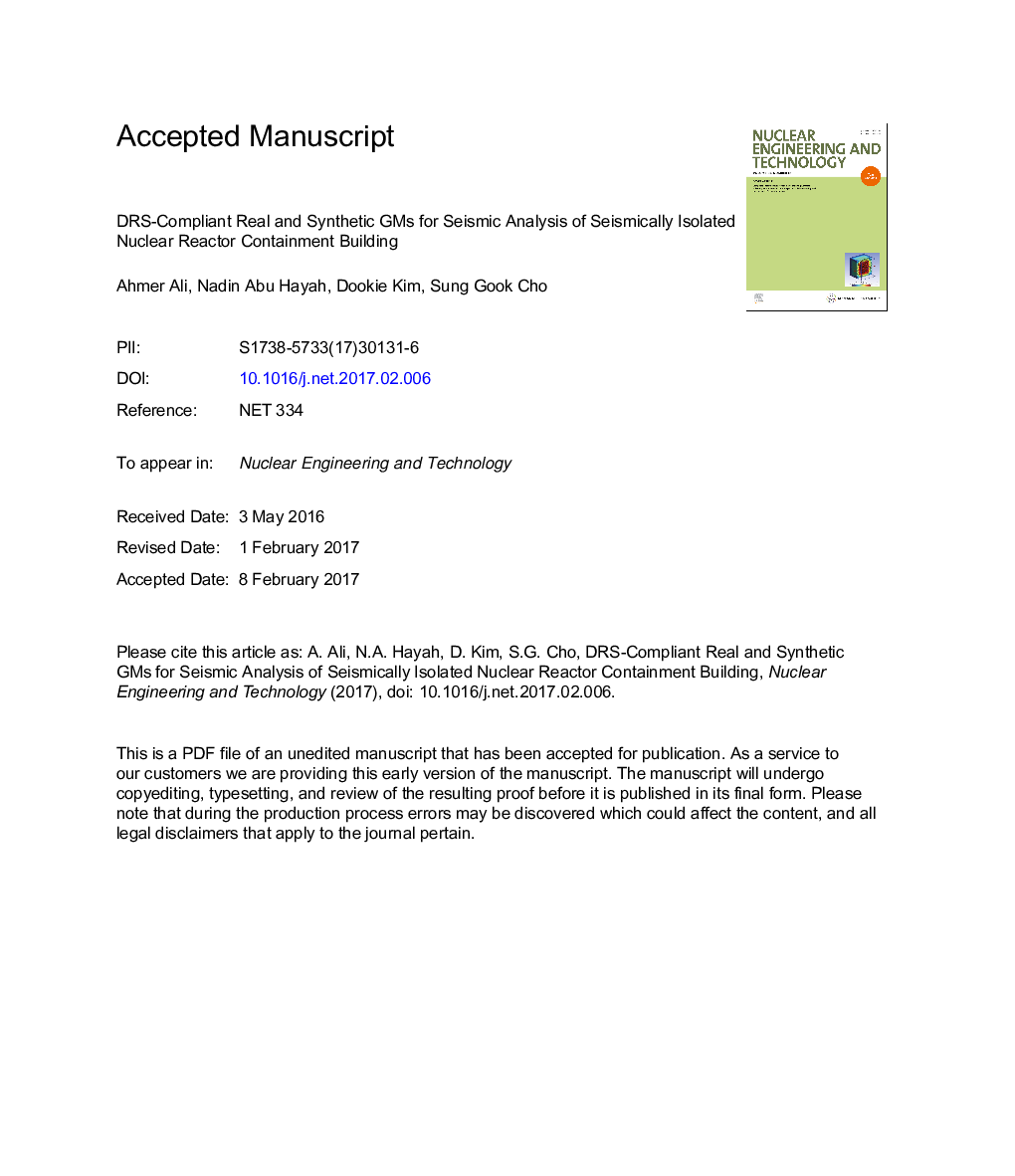| Article ID | Journal | Published Year | Pages | File Type |
|---|---|---|---|---|
| 5477963 | Nuclear Engineering and Technology | 2017 | 35 Pages |
Abstract
Due to the severe impacts of recent earthquakes, the use of seismic isolation is paramount for the safety of nuclear structures. The diversity observed in seismic events demands ongoing research to analyze the devastating attributes involved, and hence to enhance the sustainability of base-isolated nuclear power plants. This study reports the seismic performance of a seismically-isolated nuclear reactor containment building (NRCB) under strong short-period ground motions (SPGMs) and long-period ground motions (LPGMs). The United States Nuclear Regulatory Commission-based design response spectrum for the seismic design of nuclear power plants is stipulated as the reference spectrum for ground motion selection. Within the period range(s) of interest, the spectral matching of selected records with the target spectrum is ensured using the spectral-compatibility approach. NRC-compliant SPGMs and LPGMs from the mega-thrust Tohoku earthquake are used to obtain the structural response of the base-isolated NRCB. To account for the lack of earthquakes in low-to-moderate seismicity zones and the gap in the artificial synthesis of long-period records, wavelet-decomposition based autoregressive moving average modeling for artificial generation of real ground motions is performed. Based on analysis results from real and simulated SPGMs versus LPGMs, the performance of NRCBs is discussed with suggestions for future research and seismic provisions.
Keywords
Related Topics
Physical Sciences and Engineering
Energy
Nuclear Energy and Engineering
Authors
Ahmer Ali, Nadin Abu-Hayah, Dookie Kim, Sung Gook Cho,
